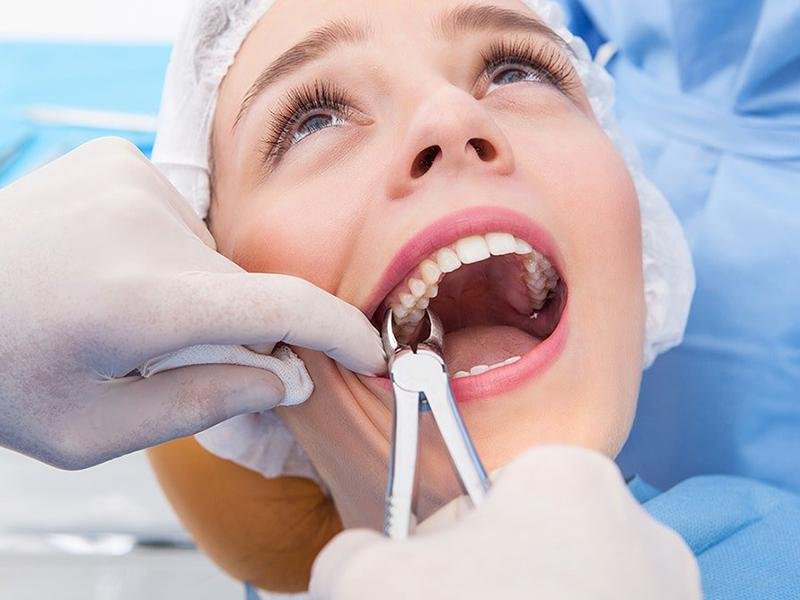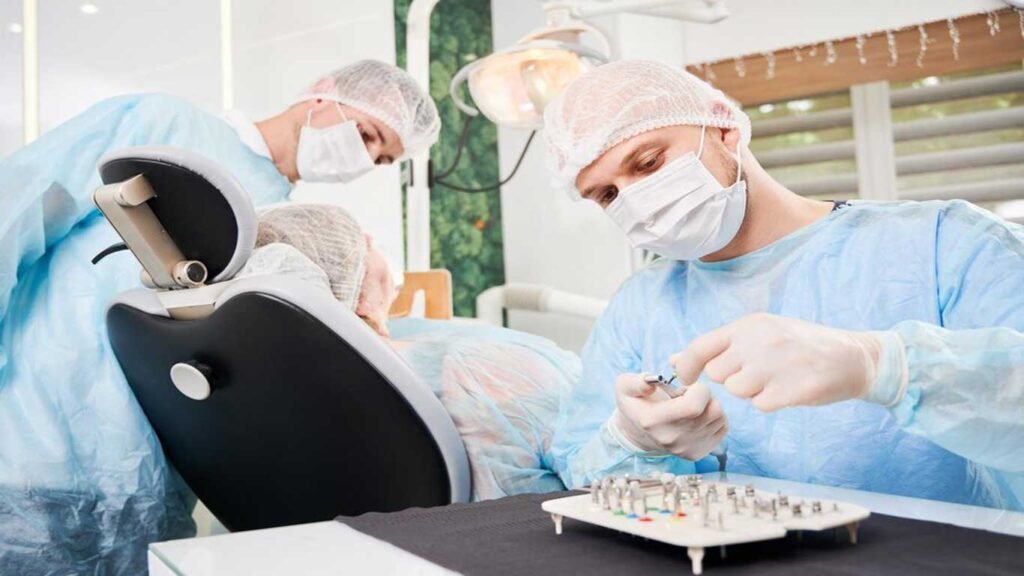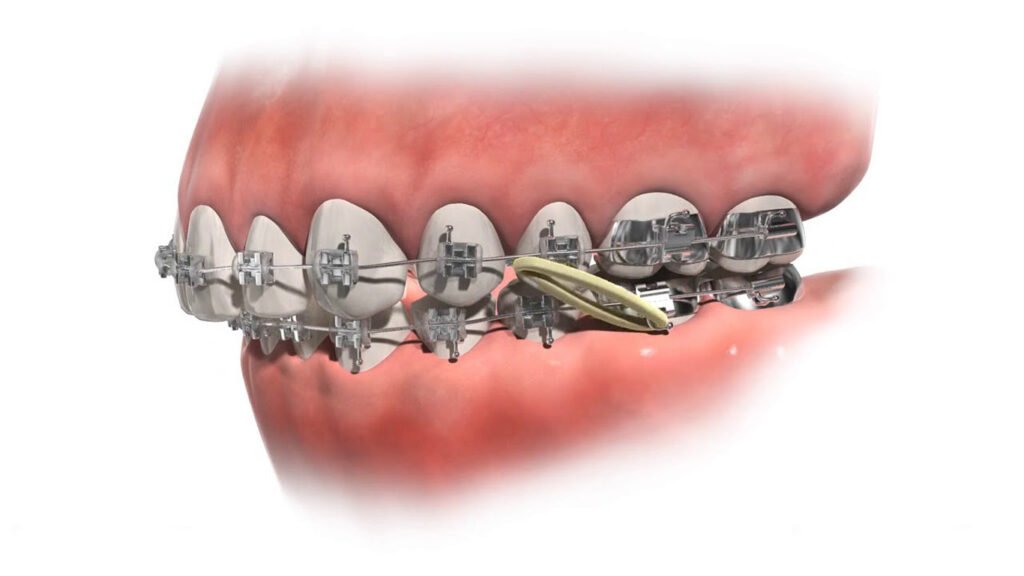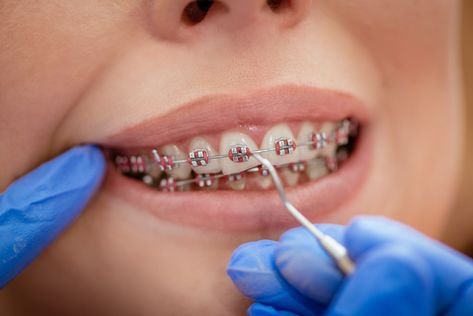Recommended tooth extractions for orthodontic purposes are a familiar method to help treat common orthodontic problems. There are multiple reasons why Dr. Mir may recommend extractions be performed in conjunction with orthodontic treatment. Extractions can help achieve the desired outcome in many different orthodontic cases.
Discussing tooth extractions
Tooth extraction is the process of removing one or more teeth from the mouth. Tooth extraction may be necessary for orthodontic care to get straight teeth, a healthy bite, and a beautiful smile. Extractions are not always essential. In fact, many patients do not need it at all. However, for some individuals, tooth extraction is an effective way to achieve straight teeth with a long-lasting outcome.
Based on your specific diagnosis, Dr. Mir may recommend you extract 1 or 4 teeth. (Please pay attention to this point that wisdom tooth removal may be for other reasons except for orthodontic care).
Extraction of an odd number of teeth is very common when addressing asymmetry in the traumatic bite or bite pattern.
After Dr. Mir determines which teeth need to be removed, he will consider how to best fit the remaining teeth in their ideal position while causing minimal disruption to the patient’s mouth, facial shape, or tongue position.
The cause of tooth extraction
Crowding
Crowding becomes apparent when there are too many teeth for the size of a patient’s dental arch. Extracting specific teeth is a common method to gain more space in the arch, allowing the remaining teeth to move into the correct alignment. This method is also common when there is not enough room in a patient’s jaw for teeth to erupt.
Some of the most common causes of dental crowding include:
- There are too many teeth.
- The jaw is too small to properly support all of the teeth.
- Teeth are excessively large, or a specific tooth is extremely large or abnormally shaped.
Supernumerary (extra) Teeth
Supernumerary teeth are extra teeth that appear in addition to the regular number of teeth. These teeth can cause impaction, meaning other regular teeth cannot erupt. This can appear in any area of a patient’s mouth, and it can be single or multiple, depending on the patient.
Wisdom Teeth
This is one of the most common extractions. Some patients’ dental arches simply do not have enough room for their wisdom teeth to erupt, or due to the small amount of room, the teeth erupt in a crooked position. This can be harmful to surrounding teeth or cause problems with a patient’s bite. In some cases, wisdom tooth extractions may be recommended to facilitate braces. Depending on the patient’s treatment plan, extractions could be done before, during, or after orthodontic treatment.
Camouflage Correction
Like it says in the name, this method is to simply camouflage or hide skeletal deformities for patients with class 2 or class 3 malocclusion. For certain patients, this is an alternative option to skeletal repositioning. The goal of this procedure is to correct the teeth’s alignment without correcting the skeletal problem.
Class 2:
The objective of this treatment is to correct either severe crowding, an overbite, or an overjet. This is done by extracting teeth in the upper arch, allowing orthodontic treatment to move the upper teeth back. This will result in the lower teeth being in a matching position.
Class 3:
The objective of this treatment is to correct an underbite. This is accomplished by extracting lower arch teeth and allowing orthodontic treatment to move the lower teeth back.
Once again, this treatment only hides and does not correct the skeletal problem. Orthognathic surgery is recommended to properly correct the skeletal problem.
Age is taken into consideration when determining if extractions are a necessary part of a patient’s treatment plan. The Canadian Association of Orthodontics recommends that children should have an orthodontic evaluation no later than age 7. This is because when problems are detected earlier on, the chance of needing extractions may be much lower. Dr. Mir can use other methods with fixed appliances, allowing arch expansion in younger children.
Avoiding tooth extractions can be achieved by working with jaw growth and creating space before teeth erupt. Adults, however, do not have as many options. Arch expansion with fixed appliances is not an option because their jaw has already fused. Due to simply not enough room in the dental arches, it is not uncommon for adults to need 2–4 teeth removed before applying braces.
Dr. Mir always focuses on other treatment options before considering tooth extraction. If another technique produces the same results as extractions, Dr. Mir and his team will always make every effort to complete the orthodontic treatment without removing the patients’ teeth.
Teeth Extractions: Frequently Asked Questions
1- Do I need teeth extraction before braces?
Only a small percentage of orthodontic cases needed extractions. Remember that tooth extraction is never the first option. Dr. Mir will consider other options before recommending it. However, in some cases, tooth extractions are the only way to achieve a beautiful smile and a healthy bite.
2- Do I need teeth extractions before getting Invisalign treatment?
Tooth extraction is the last option, and only rare orthodontic cases need extractions. If you’re getting Invisalign, Dr. Mir determines which procedures are required to help your teeth achieve the best results. If he recommends extractions, it will undoubtedly help you get the result you have always wished for.
3-How do I notice that I need teeth extractions?
Teeth growing in the wrong direction; teeth too large to fit in the proper positions; a jaw too small to fit all the teeth; teeth discolored or showing other signs of decay; or sensitive or painful teeth are all signs that you may need a tooth extracted.
4- Why do orthodontists remove teeth?
They don’t pull teeth. If they diagnose that tooth extractions are necessary for teeth alignment and a beautiful smile, they will refer you to a general dentist or oral surgeon to carry out the extraction.
Teeth removal is an effective way in these cases:
- There are too many teeth in the jaw
- A specific tooth cannot fit into the row of teeth adequately.
Remember that dentists and oral surgeons are the only ones who have been trained, certified, and experienced in dental removal.
5-Is tooth removal for braces common?
Tooth extraction is not usual in orthodontic treatment. However, it is more common in adults than in children because their teeth and bones have stopped growing, so they hardly move and easily create severe crowding. In this case, a few teeth should be removed to get the best result.
6-Is teeth removal safe for braces?
Yes, it is safe. Orthodontists are experienced and trained in handling complex cases that require dental removal. They also tell you which exact teeth need to be removed to get a beautiful smile.
7-Does tooth removal hurt?
Due to local anesthesia, you feel nothing during the extraction. You will probably feel some pain or discomfort after the anesthesia wears off. But the pain can be alleviated by using over-the-counter pain medications like Ibuprofen or Advil. In most extraction cases, the pain will die down within a day or two.
8-Can orthodontic professionals remove teeth?
Orthodontists have the education, credentials, and practical expertise to handle extraction cases. However, the extractions themselves are often not done by orthodontists. After they determine which extractions are required, they will refer you to either a general dentist or an oral surgeon to perform the extractions. After tooth extractions, you must visit your orthodontist for other orthodontic treatments.
9-Do tooth extractions impact the face shape?
You may notice a slight difference in your face shape after having your teeth extracted, but these changes are minor, and in most cases, you will hardly notice them. Remember that your face shape changes over time as a natural process, irrespective of orthodontic treatment or extraction.
10- For braces, how many teeth should be extracted?
If you need dental removal for your braces or Invisalign treatment, Dr. Mir will carefully decide which teeth and how many teeth need to be removed (usually between 1 and 4 teeth, depending on your case). In asymmetry cases, an odd number of teeth will be removed because teeth are not distributed evenly.
11-If a tooth is pulled, do the others move?
Yes, tooth extraction is a useful technique (especially in overcrowding cases) for creating a healthy bite, straight teeth, and a healthy smile. Removing one tooth makes space for other teeth to move in, and Dr. Mir can carefully relocate the teeth into the new and correct positions.
12-Is it safe to remove four teeth simultaneously?
It is uncommon to remove four teeth at once. The ultimate decision will be made by your dentist or oral surgeon, but often the four teeth removal requires several appointments. After all the teeth have been extracted, Dr. Mir will start you on braces or Invisalign shortly after to make use of the new space and start straightening your teeth for the best outcomes: a healthy bite and a beautiful smile!
13-Do I have other options rather than teeth removal for braces?
There are several options for tooth extraction:
- Adding additional bone to the palate by surgery helps it extend and make enough space for all teeth.
- Moving teeth backward in the mouth so that there is more room for all the teeth.














